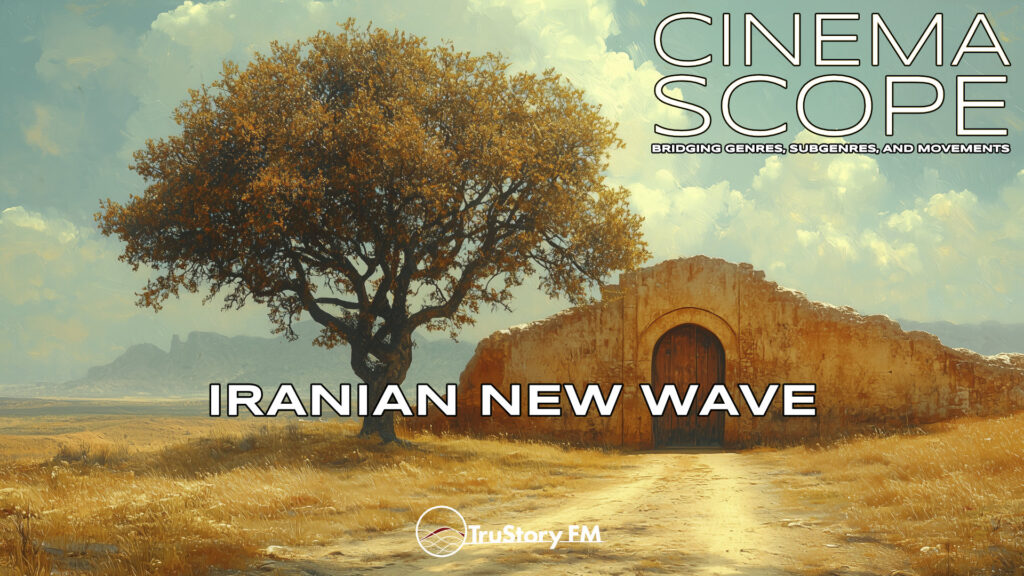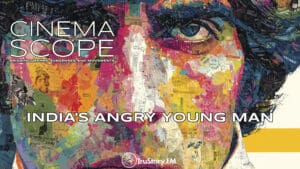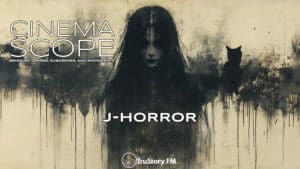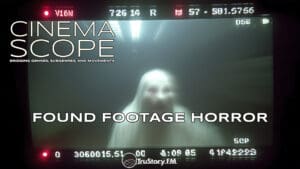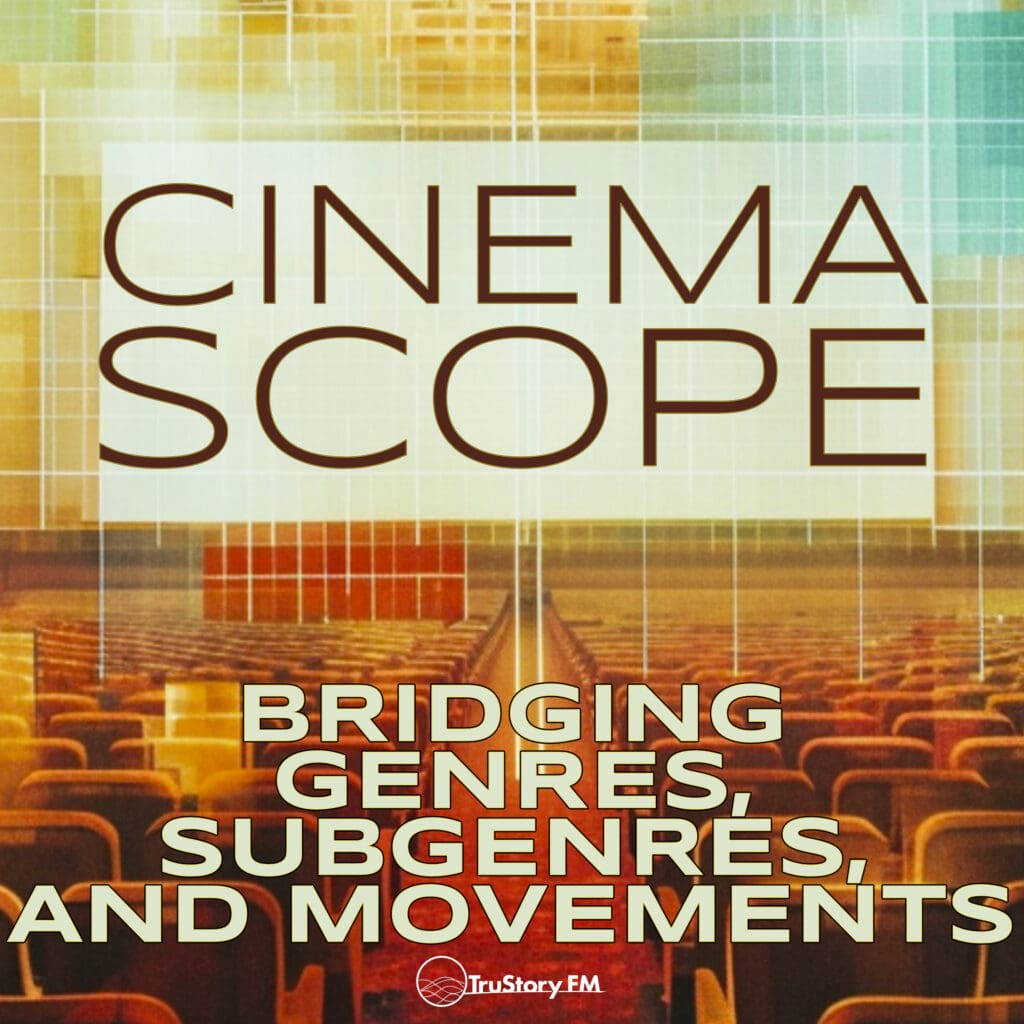Embark on a cinematic journey through the Iranian New Wave, a revolutionary movement that transformed Iranian cinema and captivated global audiences. In this episode of Cinema Scope, host Andy Nelson welcomes Kaveh Askari, associate professor and director of the Film Studies Program at Michigan State University, to explore this groundbreaking era of filmmaking.
The Evolution of Iranian New Wave Cinema
From its roots in the 1960s through the post-revolution era, the Iranian New Wave challenged traditional storytelling while focusing on the lives of ordinary people. Through a combination of realism, social commentary, and artistic innovation, these films created a unique cinematic language that resonated worldwide. The movement bridged pre- and post-revolution Iran, adapting to changing social landscapes while maintaining its distinctive artistic vision.
Five Essential Iranian New Wave Films
The conversation explores five significant works: The House is Black (1962), The Brick and the Mirror (1965), The Cow (1969), Taste of Cherry (1997), and At Five in the Afternoon (2003). Each film demonstrates different aspects of the movement, from poetic documentaries to neorealist dramas and meta-cinematic explorations. Members can enjoy an extended discussion of five additional films: Bashu, the Little Stranger (1989); A Moment of Innocence (1996); Children of Heaven (1997); Tales (2014); and Taxi (2015).
Legacy and Preservation
The Iranian New Wave presents unique challenges in preservation and accessibility today. However, the movement’s emphasis on authentic storytelling, visual poetry, and social consciousness has secured its place in cinema history. Through careful analysis of these groundbreaking films, we discover how Iranian New Wave cinema revolutionized not just Iranian filmmaking, but the global art house scene as well.
Join us for this fascinating exploration of one of cinema’s most influential movements, and discover how these pioneering filmmakers found beauty and meaning in the everyday lives of ordinary people.
Film Sundries
- Watch our conversation on YouTube!
- Check out Kaveh Askari’s books:
- Recommended and Discussed Movies
- The House Is Black on JustWatch
- The Brick and the Mirror on JustWatch
- The Cow on YouTube and JustWatch
- Bashu, the Little Stranger on YouTube and Amazon
- Taste of Cherry on Apple, Amazon, and JustWatch
- A Moment of Innocence on YouTube, Amazon, and JustWatch
- Children of Heaven on Apple, Amazon, and JustWatch
- At Five in the Afternoon on Amazon and YouTube
- Tales on JustWatch
- Taxi on Apple, Amazon, and JustWatch
- Our Letterboxd List
If you enjoyed our discussion on the Iranian New Wave episode and want to explore more films from this remarkable era, our guest Kaveh Askari has put together a list of must-watch recommendations. (Here’s the Letterboxd list.)
If interested in The House Is Black by Forough Farrokhzad or The Brick and the Mirror by Ebrahim Golestan, check out the documentary made by Ebrahim Golestan and edited by Forough Farrokhzad:
• A Fire (1961)
If interested in The Cow by Dariush Mehrjui, check out:
• Diamond 33 (1967)
• The Postman (1972)
• The Cycle (1975)
• Hamoun (1989)
• The Pear Tree (1998)
If interested in Bashu, the Little Stranger by Bahram Beyzai, check out:
• Stranger and Fog (1976)
If interested in A Moment of Innocence by Mohsen Makhmalbaf, check out:
• The Cyclist (1987)
• Gabbeh (1996)
• Kandahar (2001)
If interested in Taste of Cherry by Abbas Kiarostami, check out:
• The Traveler (1974)
• The Colors (1976)
• The Report (1977)
• Bread and Alley (1970)
• Where Is the Friend’s Home? (1987)
• Close-Up (1990)
• And Life Goes On (1992)
• Through the Olive Trees (1994)
• The Wind Will Carry Us (1999)
• Ten (2002)
• Like Someone in Love (2012)
If interested in Children of Heaven by Majid Majidi, check out:
• The Color of Paradise (1999)
• Baran (2001)
• The Song of Sparrows (2008)
• Beyond the Clouds (2017)
If interested in At Five in the Afternoon by Samira Makhmalbaf, check out her other films:
• The Apple (1998)
• Blackboards (2000)
As well as her sister Hana Makhmalbaf’s film:
• Joy of Madness (2003)
And her mother Marzieh Meshkini’s film:
• The Day I Became a Woman (2000)
If interested in Tales by Rakhshan Bani-Etemad, check out:
• Nargess (1991)
• The Blue-Veiled (1995)
• The May Lady (1998)
• Under the Skin of the City (2001)
• Mainline (2006)
If interested in Taxi by Jafar Panahi, check out:
• The White Balloon (1995)
• The Circle (2000)
• Crimson Gold (2003)
• This Is Not a Film (2011)
If interested in other art films before 1979, check out:
• The Night it Rained (1967) by Kamran Shirdel
• Tranquility in the Presence of Others (1972) by Nasser Taghvai
• The Mongols (1973) by Parviz Kimiavi
• Still Life (1974) by Sohrab Shahid-Saless
• Chess of the Wind (1976) by Mohammad Reza Aslani
• The Sealed Soil (1977) by Marva Nabili
Bonus recommendations: If you’re interested in exploring works by Amir Naderi, another notable Iranian filmmaker, check out these films (although we didn’t discuss him in our episode):
• Waiting (1974)
• The Runner (1985)
• Manhattan by Numbers (1993)
• Vegas: Based on a True Story (2008)
About Our Guest, Kaveh Askari:
Kaveh Askari is a professor in the Department of English and Director of the Film Studies Program at Michigan State University. He is the author of Relaying Cinema in Midcentury Iran: Material Cultures in Transit (University of California Press, 2022), which was awarded the 2023 Katherine Singer Kovács Book Award by the Society for Cinema and Media Studies and longlisted for the 2023 Kraszna-Krausz Moving Image Book Award. Dr. Askari has contributed to numerous publications and edited collections on topics including early art cinema, media circulation, cross-media studies of the moving image, and cinemas of the Middle East. He has served on various committees and juries, and collaborated with curators and archivists to preserve films from public archives and private collections. His current research focuses on the technologies and collective labor of the dubbed voice in the 1960s and cinema’s intersections with institutions of broadcasting and education around the Indian Ocean during a period of UNESCO-supported internationalism.







